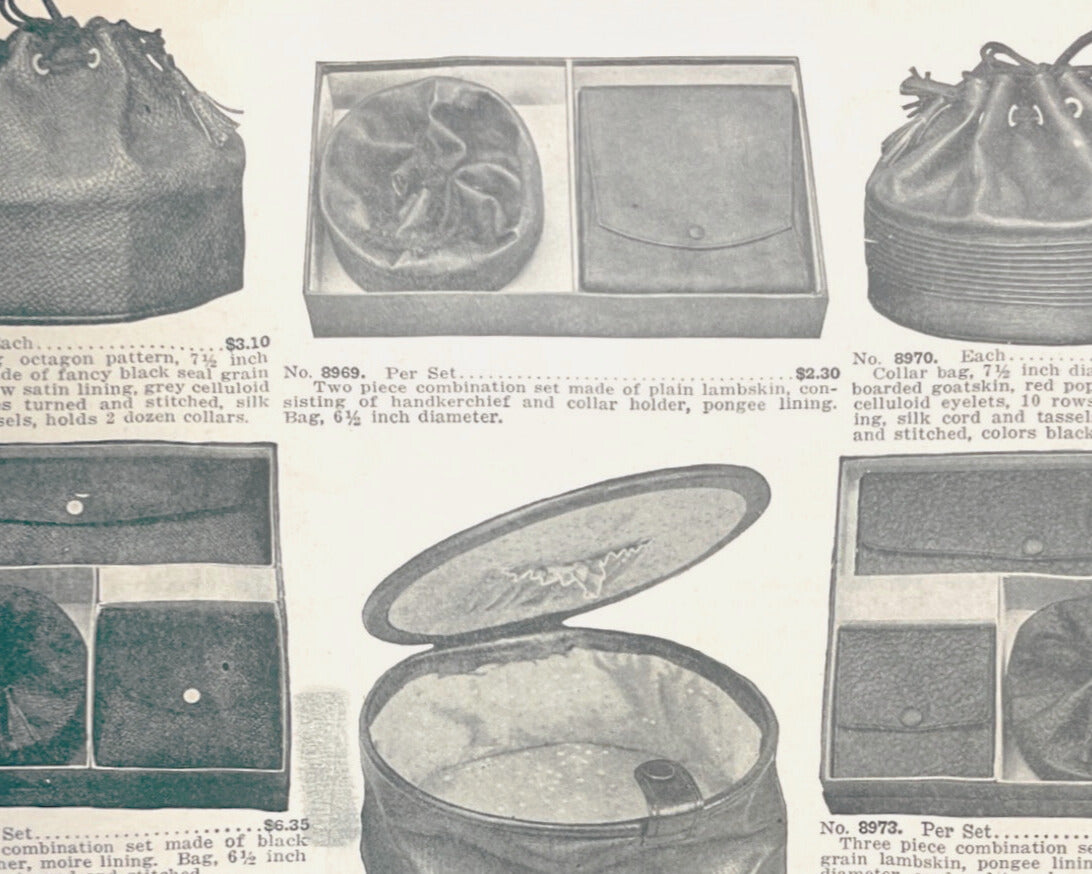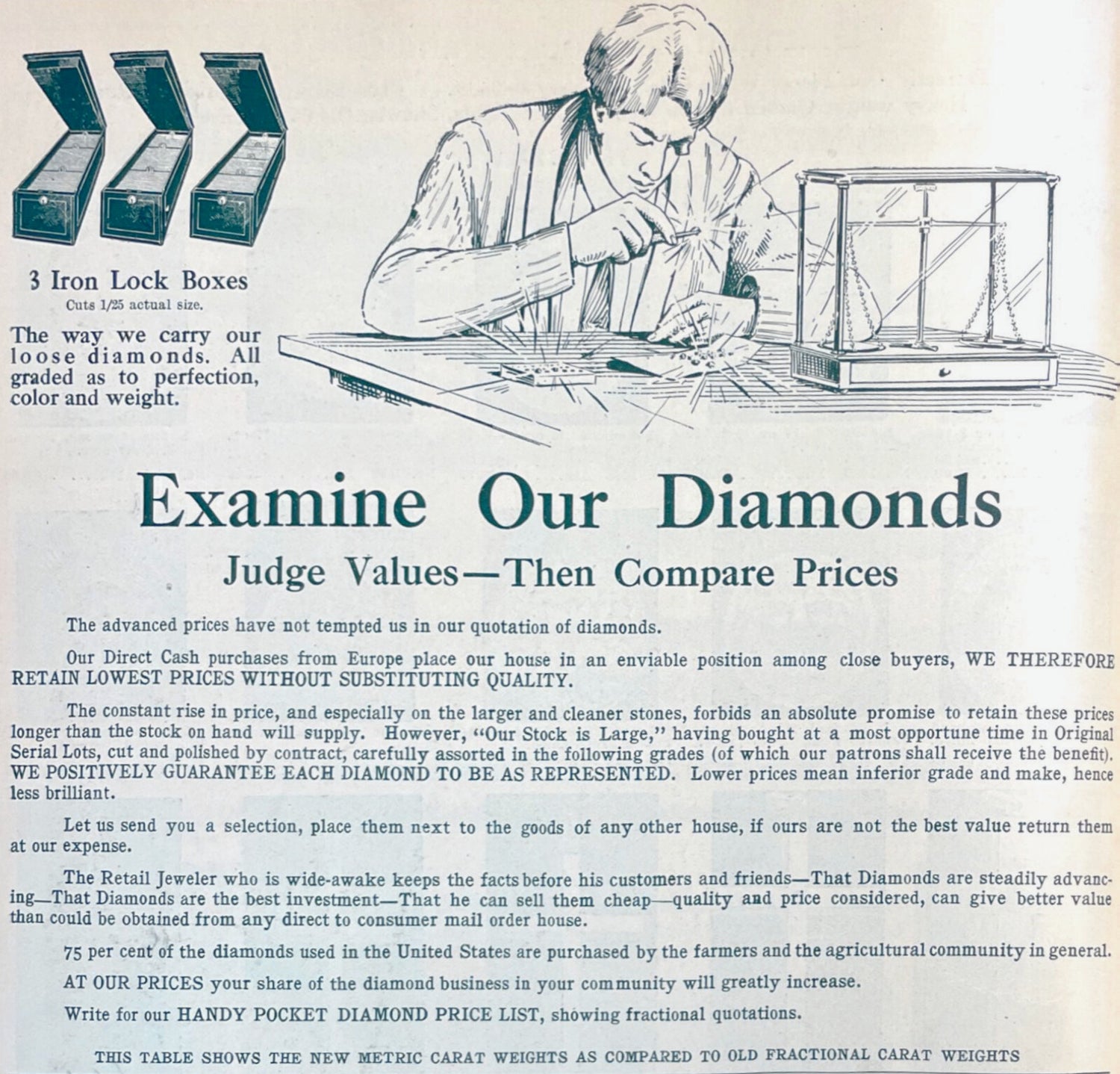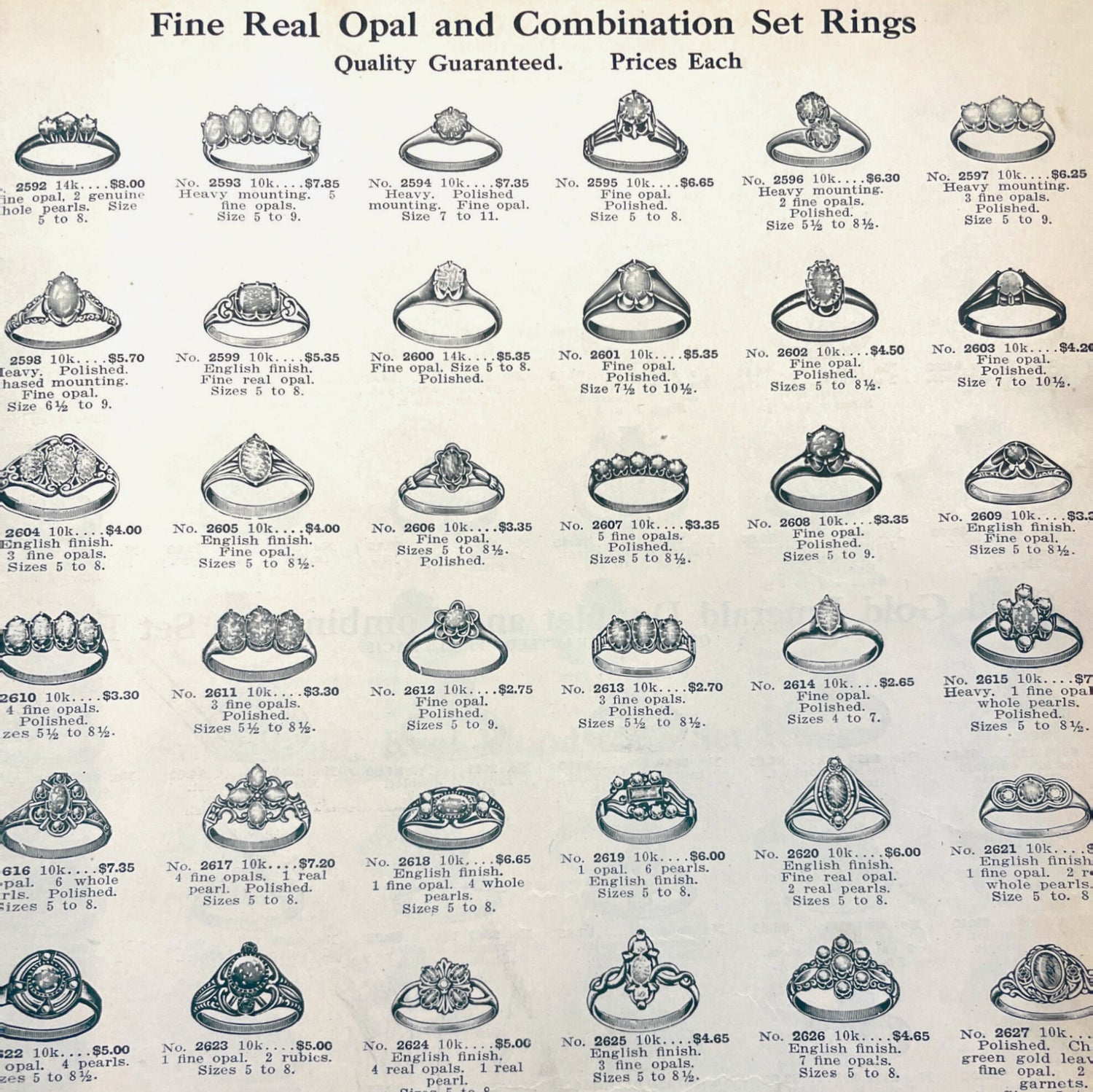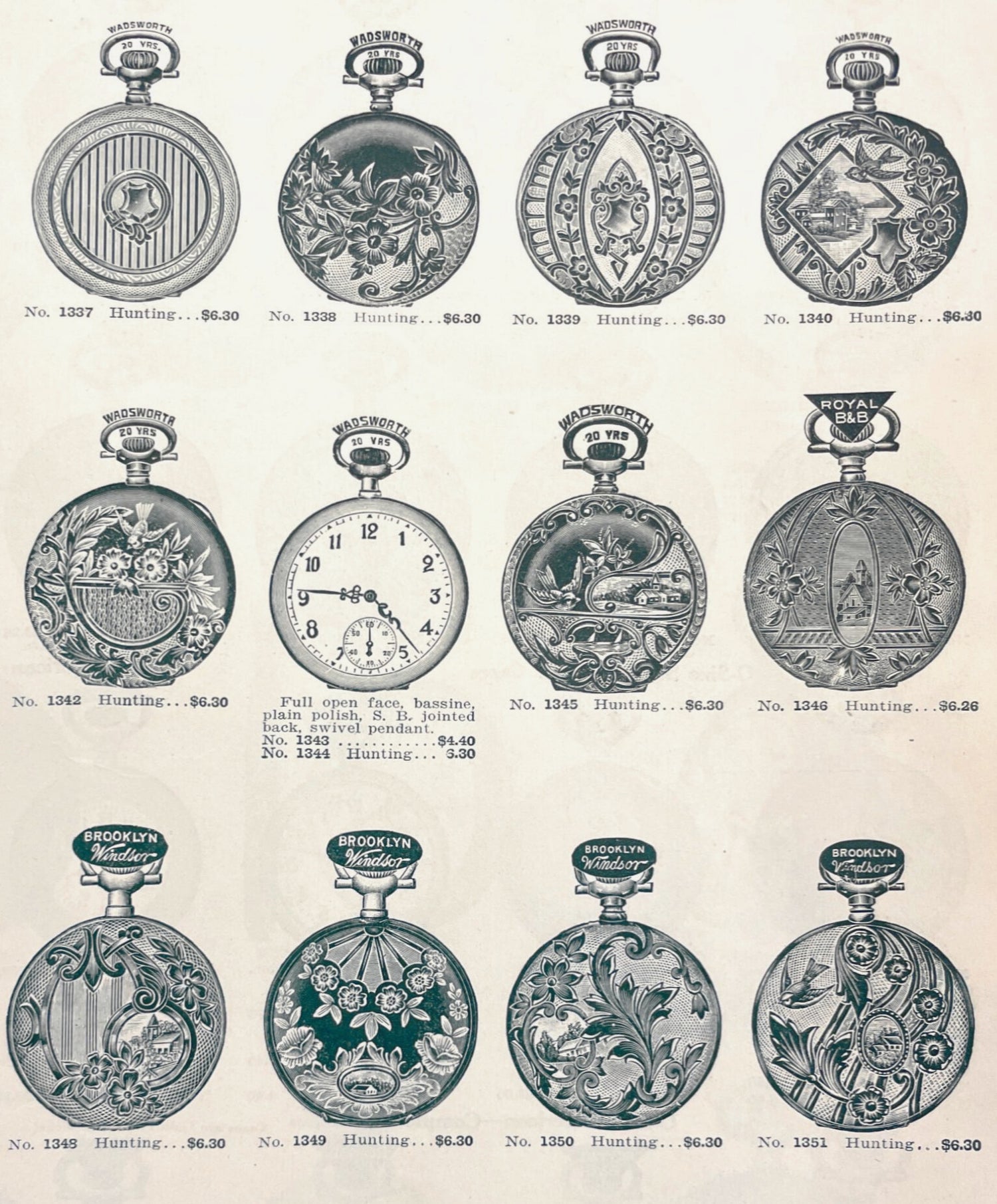EDUCATION

GENERAL CARE
While many of our pieces have survived decades (and some centuries!) there are still a few general suggestions we have to keep them pristine for decades more. We recommend removing all jewelry for bathing, sleeping, household chores, and workouts. Avoid chlorine and alcohol contact when wearing your jewelry- a few dips in the pool or drops of hand sanitizer won’t hurt, but these chemicals can affect the durability of metal over time. You can safely clean your jewelry using a mild dish soap mixed with warm water and gently scrubbing with a soft bristled toothbrush. If your piece has a closed back, keep away from water and use a soft cloth instead.

DIAMONDS
Diamonds have a long history within the jewelry world. Prized for their brilliance, they are formed deep within the Earth's mantle under high pressure and temperature and are chemically composed of carbon. Historically, diamonds were first mined in India and were traded along ancient routes. The discovery of diamond mines in South Africa in the late 19th century led to increased availability and lowered costs, making diamonds more accessible to the public. Diamonds are classified by the four C’s which are: color, clarity, cut, and carat.
Collapsible content
DIAMOND HISTORY
Diamonds have a long history within the jewelry world. Prized for their brilliance, they are formed deep within the Earth's mantle under high pressure and temperature and are chemically composed of carbon. Historically, diamonds were first mined in India and were traded along ancient routes. The discovery of diamond mines in South Africa in the late 19th century led to increased availability and lowered costs, making diamonds more accessible to the public. Diamonds are classified by the four C’s which are: color, clarity, cut, and carat.
COLOR
White diamonds are graded one a scale from D-Z, which was standardized by GIA in 1953. Up until that time jewelers had been grading color themselves and many used A, B, and C to categorize them, leading GIA to start their color grading system at D. Diamonds that fall within the D-F range are considered colorless, and will not show any yellow undertones. Diamonds that are G-J are near colorless and may have just a touch of yellow, while K-M are faint and may show yellow inn their “face up” position (viewing the stone from the top and looking down into it). Very light diamonds are N-R and S-Z will fall into the light category.
Historically, old cut diamonds tend to fall lower on the color and clarity scale, as the major diamond sources were not discovered until the lat e19th century. Their cut, however, including their chunkier facets and open culet, allow them to face up whiter and they often look like a higher color grade than they are.
CLARITY
In the world of diamonds, clarity refers to the presence of internal and external flaws, known as inclusions and blemishes, respectively. These imperfections affect the diamond's transparency and overall visual appeal. The Gemological Institute of America (GIA) developed the clarity grading scale, ranging from Flawless (no inclusions or blemishes visible under 10x magnification) to Included (inclusions visible to the naked eye). The concept of grading diamond clarity was standardized in the early 20th century to provide a consistent method for evaluating diamond quality. Historical records indicate that ancient civilizations prized diamonds for their natural beauty, often leaving them uncut to preserve their raw form.
CUT
Diamond cut refers to the craftsmanship and proportions of a diamond, affecting its brilliance, fire, and overall appearance. A well-cut diamond reflects light internally, maximizing its sparkle and beauty. The cut grading system evaluates a diamond's symmetry, proportions, and polish, ranging from Excellent to Poor. The art of diamond cutting has evolved over centuries, with advancements in technology leading to more precise and intricate cuts. The earliest known diamond cuts date back to the 14th century in Venice, where craftsmen began experimenting with transforming rough diamonds into polished gems. Today, diamond cutting combines traditional techniques with modern technology to create breathtaking jewels.
CARAT
Carat weight is a measurement of a diamond's mass, with one carat equal to 200 milligrams. This standard unit of weight originated from the carob seeds used by ancient merchants to balance scales when weighing gemstones. Diamonds of higher carat weights are rarer and generally more valuable, all else being equal. The term "carat" itself stems from the Greek word "kerátion," meaning "carob seed." Throughout history, diamonds have been mined and traded across continents, with carat weight serving as a universal metric for evaluating their worth. Today, the carat weight of a diamond remains a significant factor in determining its value and desirability.

GEMSTONES
Choosing the right gemstone is like finding the perfect shoe; sometimes you need a comfy daily driver and sometimes you don't mind a shoe that can only be worn for a few hours with the right outfit. Enter the MOHs Scale of Hardness: it's your cheat sheet for gem durability. From soft talc to tough diamond, it ranks gems on their scratch resistance form 1-10. Whether you love the vibrant, multicolored charm of opals or the blue of sapphires, knowing where your gem falls on the scale ensures your choice matches your expectations. Have more questions about gemstones or don't see what you need here? Please feel free to reach out to us! We love talking about gemstones and are happy to educate you further.
Collapsible content
RUBY
Symbolizing passion and vitality, rubies have a rich history dating back centuries. Their fiery red hue, ranging from pinkish-red to deep crimson, has adorned royalty and nobility throughout time. Their color is what sets them apart from sapphires, as both stones are a species of corundum. The trace elements that end up in the stone during formation and decide their color are the only major differences between the stones; if it's anything but red or pinkish-red, it's a sapphire! Rubies are primarily found in regions such as Myanmar, Thailand, and Mozambique, with each locale imparting its unique character to the gemstone. Many rubies undergo heat treatment to enhance their color and clarity, a practice that has been employed for centuries to bring out the gem's natural beauty. With a Mohs hardness of 9, rubies are among the toughest gemstones, making them perfect for enduring jewelry pieces that stand the test of time.
SAPPHIRE
Renowned for its stunning blue hues, sapphire has long been associated with royalty and wisdom. Historically, sapphires were believed to protect wearers from harm and envy. Like rubies, sapphires also often undergo heat treatment to enhance their color and clarity. Sapphires are not just blue, but can be any color of the rainbow, except for the red hues which would make them rubies, as both stones are from the same species and only set apart by the color. With a Mohs hardness of 9, sapphires are incredibly durable, making them ideal for everyday wear.
EMERALD
"Nothing greens greener" are the famous words written by Pliny the Elder in his description of the stone. Ancient cultures believed emeralds symbolized rebirth and eternal youth. The first record of emeralds being mined and used in jewelry dates back to ancient Egypt where they were a favorite of Cleopatra. Today, colombia is one of the world's most renowned sources of emeralds, known for producing stones of exceptional color and clarity, but they are also mined in Brazil, Afghanistan, and Zambia. With a MOHs hardness of 7.5 to 8, emeralds require slightly more careful handling with everyday wear, due in part to their inclusions which are charmingly referred to as a "jardin" which is the French word for garden, as they often look like a charming garden within the stone.
GARNET
With a color palette spanning from deep red to vibrant green, garnets have been cherished for their versatility and beauty since ancient times. Historically, garnets were often worn as protective talismans against harm and nightmares. In ancient Egypt, garnets were commonly used as inlays in jewelry and artifacts, while in ancient Rome, they were favored for signet rings and intaglios.
Today, garnets are mined in various locations worldwide, including Africa, India, and the United States. There are several types of garnets, each with its unique color range and characteristics. For example, Almandine garnets typically exhibit deep red to reddish-brown hues, while Pyrope garnets are known for their vibrant red coloration. Grossular garnets come in a variety of colors, including green, yellow, and orange, and are often found in metamorphic rocks. Andradite garnets can display colors ranging from yellow-green to black, with Demantoid garnets being the most prized for their vivid green color and exceptional brilliance.
Garnets have a Mohs hardness ranging from 6.5 to 7.5 and, like many other stones in this range, are suitable for daily wear with care.
OPAL
Known for its mesmerizing play-of-color, opals have enchanted civilizations for centuries with their ethereal beauty. Historically, opals were believed to possess mystical powers and were treasured as symbols of hope and purity, which has made them a popular gift. Prince Albert famously gifted Queen Victoria an opal ring as a wedding present which reignited a love of opals for Victorians. Today, Australia is the primary source of opals, accounting for approximately 95% of the world's supply. With a Mohs hardness of 5.5 to 6.5, opals require gentle care, but their one-of-a-kind iridescence makes that care worth it... at least we think so!
METALS
Gold has been prized for millennia due to its rarity and incredible luster. Gold is mixed with other metals to improve its durability, as pure gold is often considered too soft for daily wear. This mix is called an “alloy”. Gold purity is measured in karats, with 24 karat being pure gold and meaning 24 parts out of 24 parts are gold. Lower karats, such as 14k, indicate that 14 parts out of 24 are gold, while the other 10 out of 24 are other metals mixed in to strengthen the gold. Sometimes, whiter metals are added to a gold alloy to create white gold, which has a beautiful white luster.
Platinum, known for its strength and purity, gained popularity in the late 19th and early 20th centuries. Its malleability allowed it to be rolled out into thin wires that could be used to create the delicate filigree work that the Edwardian and Art Deco eras are famous for. It has a more greyish hue than white gold and is highly resistant to tarnishing and corrosion, making it ideal for crafting jewelry pieces that will endure the test of time.
Silver, valued for its affordability and versatility, has been used in jewelry-making since ancient times. Its availability and malleability made it a popular choice for crafting intricate pieces, however, silver's propensity to tarnish over time posed a challenge for everyday wear. As platinum gained prominence for its durability and resistance to tarnishing, silver gradually fell out of favor in fine jewelry-making for pieces intended for daily use. Nevertheless, silver still has its place in historical jewelry and is perfectly fine for everyday wear.

ERAS AND MOVEMENTS
Jewelry serves as a remarkable mirror of societal evolution, with distinct eras marked by shifting styles influenced by cultural, economic, and technological developments. World events, like wars and economic downturns, influenced jewelry styles, with periods of austerity followed by bursts of extravagance. Today, jewelry continues to evolve, embodying a fusion of global influences while also drawing inspiration from the past. Antique and vintage jewelry, with its timeless appeal and enduring craftsmanship, has gained renewed appreciation for its sustainability and eco-friendliness. Repurposing and upcycling antique pieces not only reduce waste but also honor the rich history and heritage behind each design.
Collapsible content
Georgian Era
The Georgian era (1714–1837) stands as a testament to the intricacies of jewelry design and craftsmanship from 1714 to 1837. Characterized by a meticulous attention to detail and a reverence for nature, this period witnessed the emergence of ornate motifs and delicate filigree work in jewelry. Notable historical developments, such as the discovery of diamond mines in Brazil during the early 18th century, significantly influenced the aesthetic and popularity of diamond jewelry throughout Europe. Georgian jewelry, with its botanical-inspired designs and romantic symbolism, offers a window into the cultural and artistic landscape of its time.
Victorian Era
The Victorian era, spanning from 1837 to 1901, is a rich tapestry of sentimentality and cultural expression reflected through its jewelry. Queen Victoria's personal tastes and the prevailing social norms of the era shaped jewelry themes ranging from romantic symbolism to mourning rituals. The era witnessed an outpouring of sentimental jewelry, symbolizing love and affection, inspired by Queen Victoria's enduring devotion to her husband, Prince Albert. Conversely, the solemnity of mourning found expression in jewelry crafted from black enamel, jet, and other dark materials, offering a poignant reflection on loss and remembrance. Victorian jewelry serves as both a mirror to the sentiments of the time and a testament to the skill and creativity of its artisans.
Edwardian Era
The Edwardian era, spanning from 1901 to 1915, epitomizes an era of refinement and luxury in jewelry design. Marked by intricate metalwork and ethereal lace-like motifs, Edwardian jewelry exudes an air of opulence and sophistication. The popularity of platinum, a newly favored metal for jewelry crafting due to its strength and malleability, enabled artisans to create delicate, intricate designs previously unattainable with traditional goldsmithing techniques. Against the backdrop of King Edward VII and Queen Alexandra's lavish lifestyle, Edwardian jewelry reflected the elegance and grandeur of the period, serving as a tangible expression of wealth and social status.
Art Nouveau
Art Nouveau, flourishing from 1890 to 1910, represents a captivating departure from traditional jewelry aesthetics, embracing organic forms and whimsical designs inspired by nature. This artistic movement, influenced by a myriad of sources including the natural world, Japanese art, and Symbolist painters, sought to break free from the constraints of conventional design. Art Nouveau jewelry, characterized by its flowing lines, asymmetry, and motifs such as flowers and mythical creatures, captivated the imagination with its dreamlike quality. Today, Art Nouveau jewelry remains a cherished relic of a period marked by creativity and innovation in the decorative arts.
Art Deco
The Art Deco movement, spanning the 1920s to the 1930s, represents a pinnacle of modernist design characterized by geometric shapes, bold colors, and a fascination with new materials. Emerging in the aftermath of World War I, Art Deco jewelry epitomized the spirit of progress and innovation. Influenced by Cubism, Futurism, and the machine age, Art Deco designs exuded a sense of sleek sophistication and urbanity. This period witnessed a shift towards geometric motifs, such as chevrons, sunbursts, and zigzags, reflecting the era's fascination with symmetry and precision. Platinum became the metal of choice, allowing artisans to create intricate settings that complemented the geometric forms of the jewelry. Art Deco jewelry remains a timeless testament to the dynamism and glamour of the Roaring Twenties and the Jazz Age, capturing the essence of a bygone era in its bold and distinctive designs.
Retro
The Retro era, spanning from the 1940s to the 1950s, emerged as a response to the tumultuous events of World War II, characterized by a return to glamour and escapism in jewelry design. Influenced by Hollywood's Golden Age and the allure of celebrity culture, Retro jewelry exuded a sense of opulence and extravagance. Large, bold designs adorned with colorful gemstones became emblematic of the era, reflecting a desire to capture the spirit of post-war optimism and prosperity. Yellow and rose gold enjoyed a resurgence in popularity during this time, as platinum became scarce due to wartime restrictions. Retro jewelry embraced motifs such as bows, ribbons, and floral designs, imbuing each piece with a sense of femininity and romance. Today, Retro jewelry remains a beloved relic of a period marked by Hollywood glamour and the pursuit of luxury in the face of adversity.
Mid-century
The Mid-century era, spanning from the 1950s to the 1960s, represents a period of transition and innovation in jewelry design, reflecting the optimism and technological advancements of the post-war era. Characterized by sleek, modernist designs and an emphasis on clean lines and geometric shapes, Mid-century jewelry captured the spirit of progress and renewal. This era witnessed the emergence of new materials such as stainless steel, acrylic, and Lucite, as well as innovative techniques such as electroforming and enameling. Mid-century jewelry often featured abstract motifs inspired by space exploration, atomic energy, and the burgeoning influence of science and technology. The era's minimalist aesthetic and focus on functionality reflected a shift towards simplicity and efficiency in design. Mid-century jewelry remains a testament to the spirit of innovation and experimentation that defined the era, offering a glimpse into a period of rapid social and cultural change.
STILL HAVE QUESTIONS?
Don't hesitate to reach out! We do our best to get back to all messages in 24 hours.
